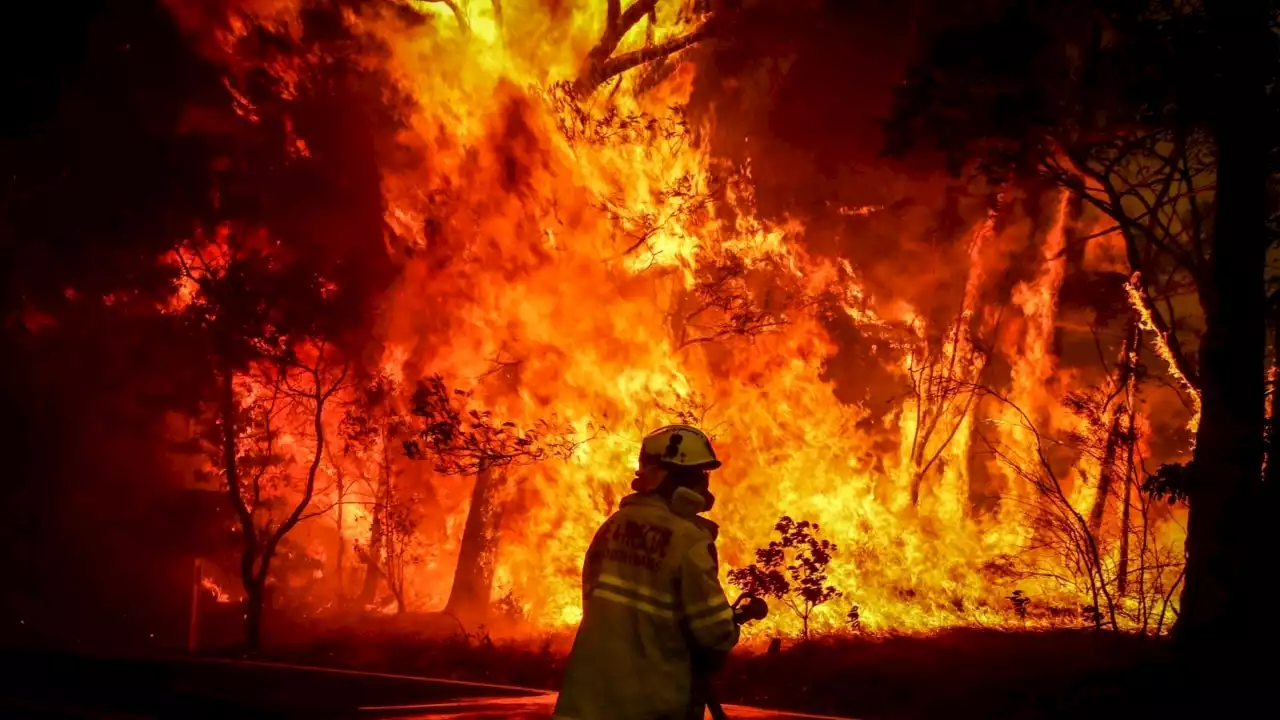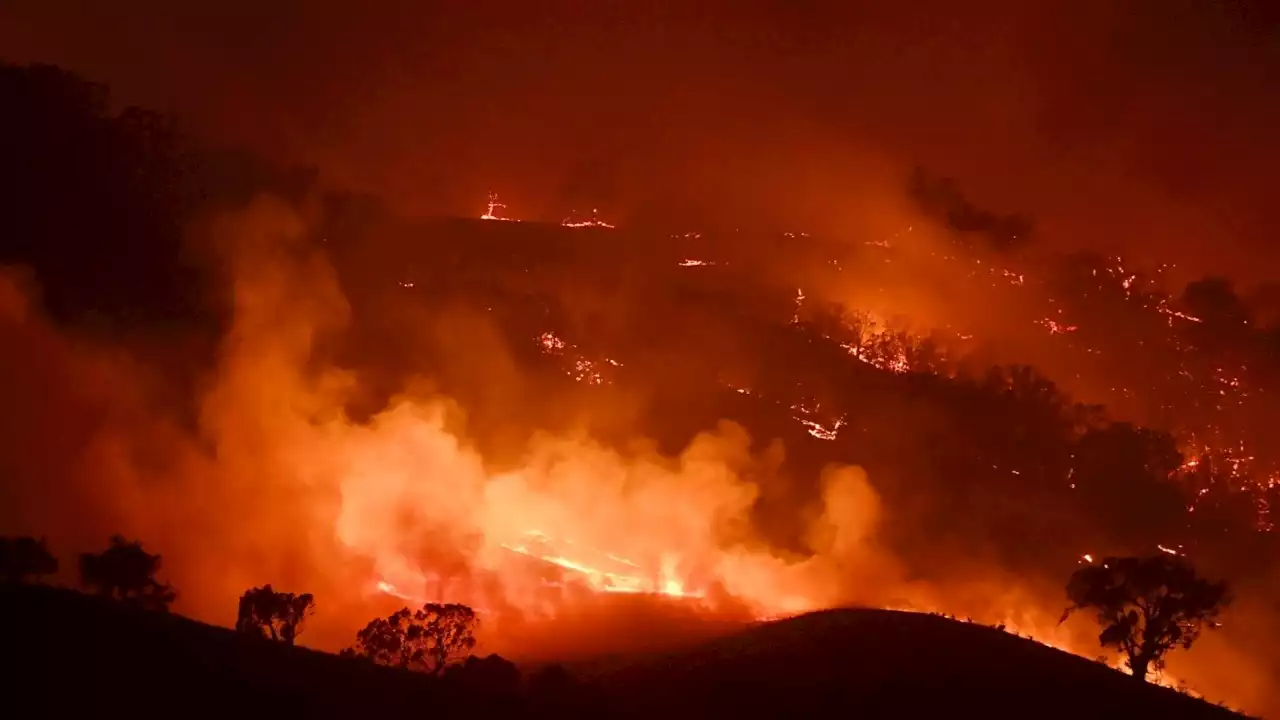Sydney’s fire threat is set to worsen as scorching temperature and strong winds make for dangerous conditions. The strong northwesterly wind ripped through parts of Sydney, moving between 30 and 50 kilometres per hour at Penrith. New South Wales is still on high alert as Sydney enters its fifth and final day of unreasonable spring heat. Winds got as high as 65kmph in other parts of Sydney, and it’s this coupled with these really high temperatures, which is creating really dangerous conditions for firefighters. For those working on the fire front it has been a day of dangerous conditions, there’s extreme fire danger ratings in place for Greater Sydney, for Greater Hutner, and also parts of the Upper Central West Plains – a total fire ban in place for those areas.
Sydney’s fire threat is set to worsen as scorching temperature and strong winds make for dangerous conditions.
The strong northwesterly wind ripped through parts of Sydney, moving between 30 and 50 kilometres per hour at Penrith. New South Wales is still on high alert as Sydney enters its fifth and final day of unreasonable spring heat. Winds got as high as 65kmph in other parts of Sydney, and it’s this coupled with these really high temperatures, which is creating really dangerous conditions for firefighters.
For those working on the fire front it has been a day of dangerous conditions, there’s extreme fire danger ratings in place for Greater Sydney, for Greater Hutner, and also parts of the Upper Central West Plains – a total fire ban in place for those areas.
Australia Latest News, Australia Headlines
Similar News:You can also read news stories similar to this one that we have collected from other news sources.
 Sydney weather LIVE updates: Total fire ban issued for Greater Sydney; Extreme fire danger declaredSydney is on track to swelter through its hottest September day on record. Follow live as we take you through what is set to be a scorcher.
Sydney weather LIVE updates: Total fire ban issued for Greater Sydney; Extreme fire danger declaredSydney is on track to swelter through its hottest September day on record. Follow live as we take you through what is set to be a scorcher.
Read more »
 Australians need to ‘focus’ on days of heightened fire dangerNew South Wales Rural Fire Service Deputy Commissioner Peter McKechnie says Australians need to “focus” on days of heightened fire danger. NSW is still on high alert as Sydney enters its fifth and final day of unreasonable spring heat, with a total fire ban in place for the Greater Sydney region, the Hunter, and the New South Wales Upper Central Coast West Plains. “The modelling they have done around what level of fire danger can they accept with the rest of those schools, that’s something that certainly parents can talk to the schools about,” he told Sky News Australia. “We are going to see days of heightened fire danger; we are going to see days that get into that extreme level. “Part of being ready as a community and agencies is knowing what we’re going to do when those higher fire dangers are there.”
Australians need to ‘focus’ on days of heightened fire dangerNew South Wales Rural Fire Service Deputy Commissioner Peter McKechnie says Australians need to “focus” on days of heightened fire danger. NSW is still on high alert as Sydney enters its fifth and final day of unreasonable spring heat, with a total fire ban in place for the Greater Sydney region, the Hunter, and the New South Wales Upper Central Coast West Plains. “The modelling they have done around what level of fire danger can they accept with the rest of those schools, that’s something that certainly parents can talk to the schools about,” he told Sky News Australia. “We are going to see days of heightened fire danger; we are going to see days that get into that extreme level. “Part of being ready as a community and agencies is knowing what we’re going to do when those higher fire dangers are there.”
Read more »
 Hottest September day in 23 years forecast for Sydney as fire crews prepare for ‘tough’ conditionsMore than 20 public schools were shut on Tuesday as a severe heatwave and strong winds put fire crews across the state on high alert.
Hottest September day in 23 years forecast for Sydney as fire crews prepare for ‘tough’ conditionsMore than 20 public schools were shut on Tuesday as a severe heatwave and strong winds put fire crews across the state on high alert.
Read more »
 'Extreme' fire danger warnings for Sydney, Hunter regions as record hot weather persistsA day after El Niño was formally declared by the Bureau of Meteorology, fire bans are in place as hot and dry conditions are forecast across New South Wales.
'Extreme' fire danger warnings for Sydney, Hunter regions as record hot weather persistsA day after El Niño was formally declared by the Bureau of Meteorology, fire bans are in place as hot and dry conditions are forecast across New South Wales.
Read more »
 Sydney to set new heat record as total fire ban hits millionsSizzling temperatures are set to continue today.
Sydney to set new heat record as total fire ban hits millionsSizzling temperatures are set to continue today.
Read more »
 NSW on high alert as Sydney enters final day of unseasonable spring heatNew South Wales is on high alert as today marks the final day of Sydney’s unseasonable spring heat. After tying its all-time record for September yesterday, the mercury in the city is tipped to peak higher today at 35 degrees. A total fire ban is in place for the Greater Sydney region, the Hunter, and the New South Wales Upper Central West Plains. National parks across Sydney will be closed today due to the extreme fire warning in place from the Rural Fire Service. The unseasonably hot and dry conditions are being felt across the south-east coast with temperatures reaching 8 to 16 degrees above average across New South Wales and Victoria.
NSW on high alert as Sydney enters final day of unseasonable spring heatNew South Wales is on high alert as today marks the final day of Sydney’s unseasonable spring heat. After tying its all-time record for September yesterday, the mercury in the city is tipped to peak higher today at 35 degrees. A total fire ban is in place for the Greater Sydney region, the Hunter, and the New South Wales Upper Central West Plains. National parks across Sydney will be closed today due to the extreme fire warning in place from the Rural Fire Service. The unseasonably hot and dry conditions are being felt across the south-east coast with temperatures reaching 8 to 16 degrees above average across New South Wales and Victoria.
Read more »
